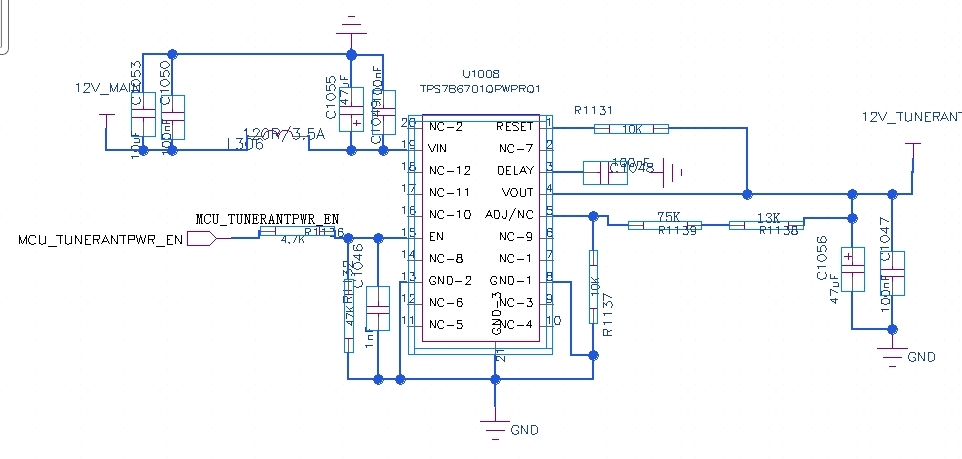Hello team,
Could you help review the schematics that customer use, 12V main means the 12V bat (9v-16v typical), is there any risk?
Customer report 7pcs IC failure in 0km vehicle, FA is ongoing.
One of my concern is the low dropout recovery issue of tps7b67, is it possible the output is higher than the input during the start up, which cause a reverse current that damage the device.
Thanks.
Dongbao


